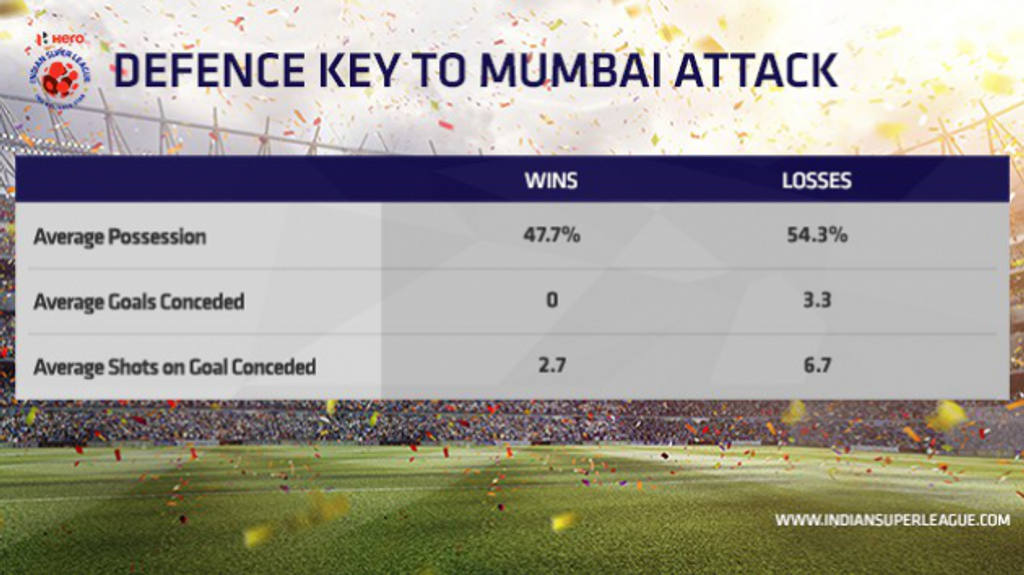Defence and counter-attack key to Mumbai wins
default


Mumbai City have had a mixed start to their Hero Indian Super League (ISL) campaign with three wins and three losses from six games. A comparison of Mumbai’s performances in their wins and losses reveals that defensive discipline is the difference between victory and defeat for Peter Reid’s side.
The obvious metric to examine this is the number of goals conceded. Mumbai have conceded 10 in three games -- three to Atlético de Kolkata, two against NorthEast United, and a whopping five against Chennaiyin FC. Chennai too have let in the same number while six other sides have let in fewer goals as of now.
Remarkably, Mumbai’s three wins were achieved on the back of clean sheets. As head coach Reid described it himself, Mumbai have been the ultimate Jekyll-and-Hyde team, especially in defence.
Mumbai’s defensive inconsistency further extends to the number of shots on target they concede. This indicates that the opposition team is getting into better attacking positions and thus taking a higher percentage of shots, keeping Mumbai keeper Subrata Paul constantly busy. In their three losses, Mumbai conceded a total of 20 shots on target -- six against Kolkata, three against NorthEast United FC and 11 against Chennaiyin. This works out to an average of 6.7 shots on target per game.
In contrast, Mumbai City conceded only eight shots on target in their wins – one against FC Pune City, three against Kerala Blasters FC, and four against Delhi Dynamos FC – an average of 2.7 per game.
Another key stat for Reid’s men is ball possession. While conventional wisdom suggests having more of the ball than your opponent is a recipe for success, the opposite seems to apply for Mumbai City. In two of their three wins, they have had less of the ball than the opposition, while in all three losses, they have actually had the larger share of possession. And again, the difference is stark – their average ball possession in losses is nearly 7% greater than that in their wins!
These stats point to a clear gameplan for Reid to plot his way to victory. While much of the pre-tournament hype surrounding Mumbai centred on their high-powered attack, they seem to be more successful when employing a more counterattacking strategy. Keep things tight at the back, close down spaces to deny shooting opportunities, and cede possession to their opponents, waiting to strike on the counter.
This may be particularly effective against their next opponents, Goa, who are the leaders in many attacking statistics, yet sit last on the table and have shown themselves to be susceptible to counterattacks.

























